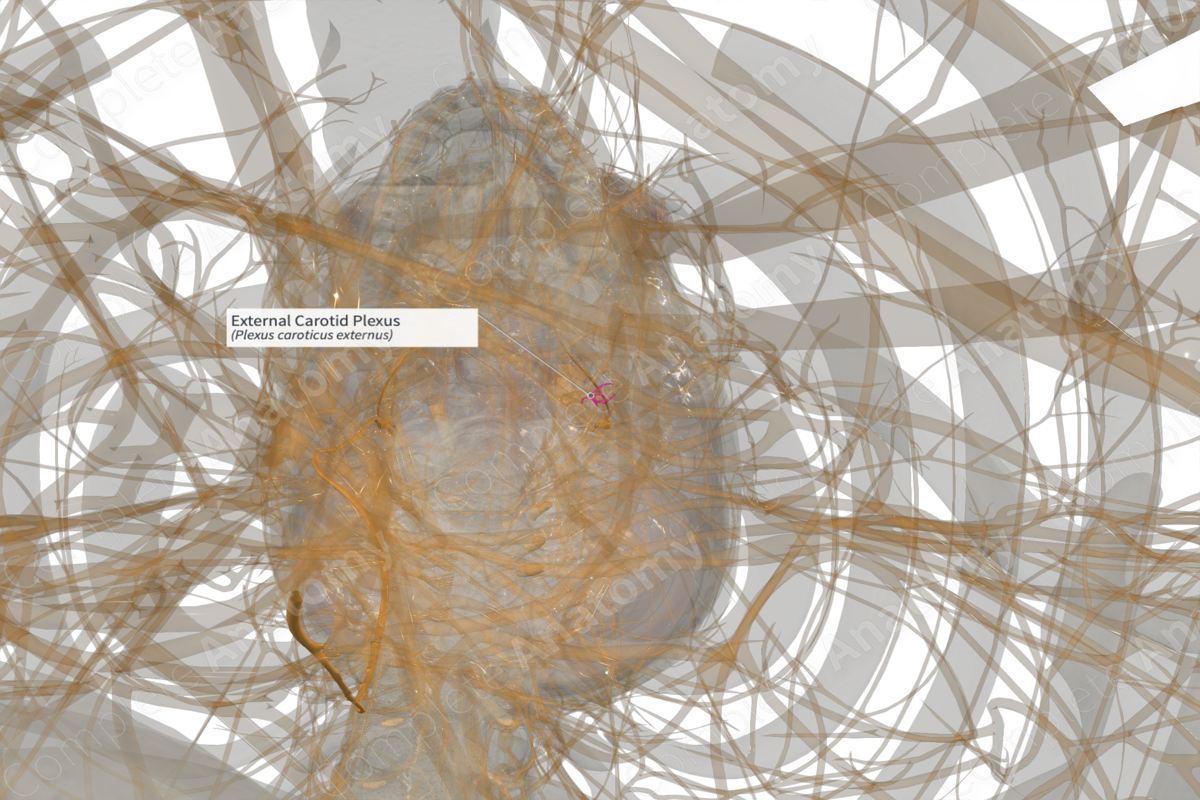
Quick Facts
Origin: Continuation of the common carotid plexus, with its fibers originate in the superior cervical ganglion.
Course: Travels superiorly along the surface of the external carotid artery.
Branches: None.
Supply: Sympathetic efferent fibers to the glands and mucosa of the head and neck.
Origin
The external carotid plexus is formed by the external carotid nerve, which originates in the superior cervical ganglion of the sympathetic trunk.
Course
As the external carotid artery ascends through the neck and head, the sympathetic fibers forming the plexus follow it, traveling on the surface of the external carotid artery.
Branches
The external carotid plexus gives off unnamed arterial sympathetic fibers that travel with the branches of the external carotid artery to reach targets throughout the head.
Supplied Structures
The external carotid plexus supplies sympathetic efferent innervation to the glands and mucosal linings of the head and neck.
List of Clinical Correlates
—Horner’s syndrome
—Anhidrosis
—Myosis
—Ptosis
Learn more about this topic from other Elsevier products
Plexus

Visceral plexuses are a network of nerve fiber and ganglia surrounding organs of the abdomen and pelvis region that convey sympathetic, parasympathetic, and visceral afferent input.




